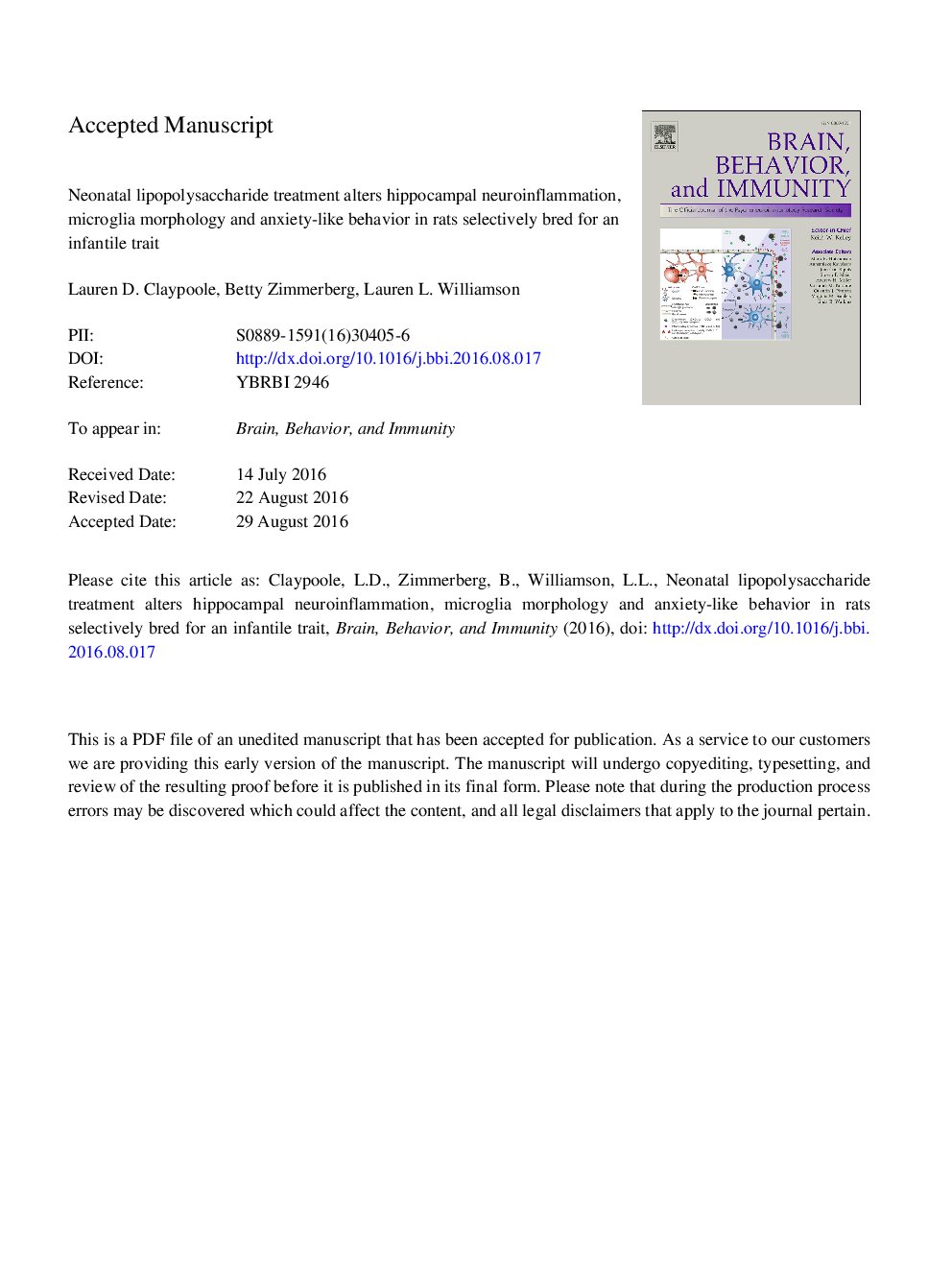ترجمه فارسی عنوان مقاله
درمان لیپوپلی ساکارید نوزادان باعث تغییر التهاب عصبی هیپوکامپ، مورفولوژی میکروگلاییا و رفتار اضطرابی مانند در موش های صحرایی می شود
عنوان انگلیسی
Neonatal lipopolysaccharide treatment alters hippocampal neuroinflammation, microglia morphology and anxiety-like behavior in rats selectively bred for an infantile trait
| کد مقاله | سال انتشار | تعداد صفحات مقاله انگلیسی |
|---|---|---|
| 120470 | 2017 | 38 صفحه PDF |
منبع

Publisher : Elsevier - Science Direct (الزویر - ساینس دایرکت)
Journal : Brain, Behavior, and Immunity, Volume 59, January 2017, Pages 135-146
ترجمه کلمات کلیدی
التهاب نوزادان، توسعه، اضطراب، میکروگلایا،
کلمات کلیدی انگلیسی
Neonatal inflammation; Development; Anxiety; Microglia;

